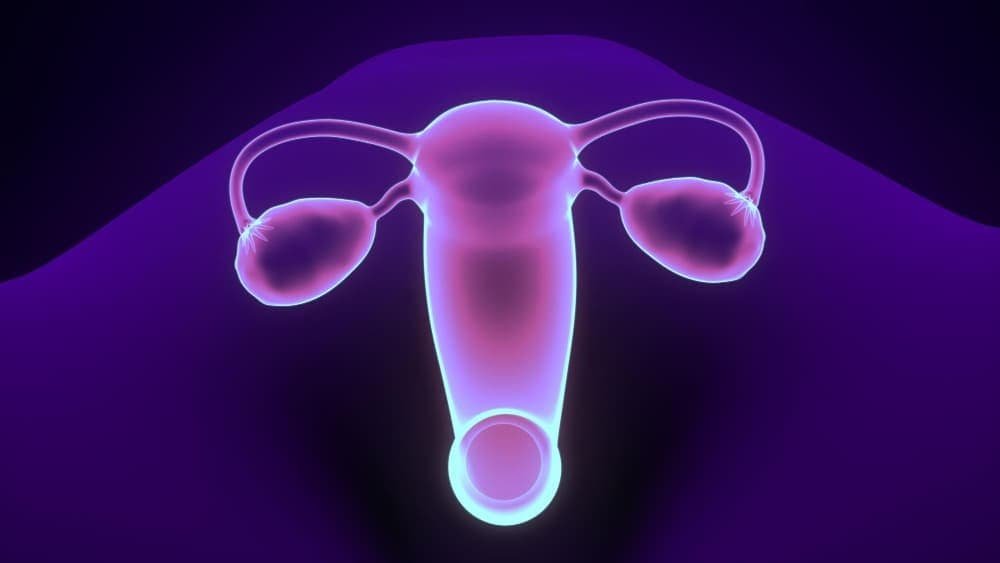Adenomyosis and fertility are connected more than many think. This guide explains how the condition affects implantation, clinical pregnancy rates, IVF and natural conception—and the evidence-based treatments that can improve your chances.

What Is Adenomyosis and How Does It Affect Women?
Adenomyosis occurs when the tissue that normally lines the uterus grows into the uterine muscle wall. Unlike endometriosis, where similar tissue grows outside the uterus, adenomyosis stays within the uterine walls but causes significant changes to the organ’s structure and function.
The presence of adenomyosis can make the uterus enlarged, tender, and less receptive to pregnancy. This common gynecological disorder affects approximately 20-30% of women, particularly those in their 30s and 40s who have had children.
Recognizing the Signs
Women with adenomyosis often experience heavy menstrual bleeding, severe cramping, and an enlarged uterus. These symptoms can significantly impact quality of life and raise concerns about fertility potential.
How Adenomyosis Impacts Fertility and Pregnancy Rates
Multiple studies have examined the relationship between adenomyosis and fertility outcomes. Research consistently shows that women with adenomyosis face unique challenges when trying to conceive.
Clinical pregnancy rates tend to be lower in women with adenomyosis compared to those without the condition. Studies indicate that the presence of adenomyosis can reduce conception chances by approximately 15-25%, though individual outcomes vary significantly.
Understanding the Mechanisms
The negative effects of adenomyosis on fertility stem from several factors:
- Altered Uterine Environment: The condition creates an inflammatory environment within the uterus that can interfere with embryo implantation and development.
- Reduced Receptivity: The uterine lining becomes less receptive to embryo attachment, affecting the earliest stages of pregnancy.
- Structural Changes: An enlarged uterus may affect blood flow and create physical barriers to successful pregnancy establishment.
Adenomyosis and Endometriosis Together
Some women have both adenomyosis and endometriosis together, which can compound fertility challenges. When these conditions coexist, reproductive outcomes may be further compromised compared to having either condition alone.
Comparison with Uterine Fibroids
While both adenomyosis and uterine fibroids can affect fertility, they impact reproduction differently. Uterine fibroids are benign tumors that grow within or on the uterine wall, while adenomyosis involves tissue growing into the muscle itself.
IVF Success Rates
Women with adenomyosis who undergo in vitro fertilization may experience lower clinical pregnancy rates compared to women without the condition. However, many still achieve successful pregnancies through IVF.
Research provides indirect proofs that treating adenomyosis before IVF can improve outcomes. Some studies suggest that addressing the condition first may enhance both clinical pregnancy rates and live birth rates.
Treatment Timing Considerations
The timing of adenomyosis treatment relative to fertility treatments requires careful consideration. Some women benefit from treating adenomyosis before attempting conception, while others may proceed directly to assisted reproductive technologies.
“I’m Pregnant with Adenomyosis” – What the Data Shows
Despite challenges, many women successfully conceive and carry pregnancies to term with adenomyosis. Success depends on various factors including:
- Severity of the condition
- Age and overall health
- Response to treatment
- Access to specialized care
Factors That Support Successful Pregnancy with Adenomyosis
Women who achieve successful pregnancy with adenomyosis often share certain characteristics:
- Early Diagnosis: Identifying adenomyosis early allows for better treatment planning and timing.
- Comprehensive Care: Working with specialists who understand the condition’s impact on fertility provides better outcomes.
- Treatment Compliance: Following prescribed treatments and lifestyle modifications can improve reproductive success.
Treatment Options for Adenomyosis and Fertility
Medical Management
Various medical treatments can help manage adenomyosis symptoms and potentially improve fertility outcomes:
- Hormonal Therapies: These can help reduce inflammation and control symptoms, though their direct effect on fertility varies.
- Pain Management: Controlling pain and inflammation may create a more favorable environment for conception.
Advanced Treatment Approaches
Dr. Samir Abdel Ghaffar, an interventional radiology consultant, offers specialized treatments including uterine catheterization for adenomyosis. This minimally invasive approach can help preserve fertility while addressing the condition.
Adenomyosis Treatment for Fertility: Modern Options
Current treatment strategies focus on:
- Reducing uterine inflammation
- Improving blood flow
- Preserving uterine structure and function
- Minimizing impact on reproductive potential
Mild Adenomyosis and Fertility: Better Outcomes
Women with mild adenomyosis and fertility concerns often have better reproductive outcomes compared to those with severe disease. The extent of uterine involvement directly correlates with fertility impact.
Treatment Approach for Mild Cases
Mild cases may respond well to conservative management, allowing women to maintain or improve their fertility potential without aggressive interventions.
Natural Conception Strategies 🌿
How to Get Pregnant with Adenomyosis Naturally
While medical treatment often helps, some women wonder about natural approaches to conception with adenomyosis:
Lifestyle Modifications:
- Anti-inflammatory diet
- Regular exercise
- Stress management
- Adequate sleep
Nutritional Support:
- Omega-3 fatty acids
- Antioxidants
- Vitamin D optimization
Timing and Tracking:
- Careful ovulation monitoring
- Optimal timing for conception attempts
Understanding Live Birth Rates
Live birth rates represent the ultimate measure of reproductive success. For women with adenomyosis, live birth rates may be slightly lower than the general population, but many still achieve this outcome.
Studies show that with appropriate treatment and care, women with adenomyosis can achieve live birth rates that approach those of women without the condition.
Factors Influencing Live Birth Success
Several factors influence the likelihood of achieving a live birth with adenomyosis:
- Maternal age
- Severity of adenomyosis
- Treatment response
- Overall health status
- Access to specialized care
NHS and Healthcare System Approaches
Adenomyosis and Fertility NHS Guidelines
Healthcare systems like the NHS have developed guidelines for managing adenomyosis and fertility concerns. These typically emphasize:
- Early diagnosis and assessment
- Individualized treatment planning
- Coordinated care between specialists
- Patient education and support
Accessing Care and Support
Women seeking help for adenomyosis and fertility should work with healthcare providers who understand the condition’s complexity and can offer comprehensive care plans.
Community Support and Online Resources 💭
Adenomyosis and Fertility Reddit Communities
Online communities provide valuable peer support for women navigating adenomyosis and fertility challenges. These platforms offer:
- Shared experiences and success stories
- Treatment information and updates
- Emotional support during difficult times
- Practical advice from others who understand
Future Outlook and Research Directions
Emerging Treatments
Research continues to explore new treatment options that may better preserve or restore fertility in women with adenomyosis. These include:
- Novel hormonal approaches
- Advanced surgical techniques
- Regenerative medicine applications
- Personalized treatment strategies
Hope for the Future
As understanding of adenomyosis grows, treatment options continue to improve. Women diagnosed today have access to more sophisticated care than ever before, offering greater hope for achieving their reproductive goals.
Taking Action: Your Next Steps ✨
If you’re dealing with adenomyosis and fertility concerns, consider these important steps:
- Seek Specialized Care: Work with healthcare providers experienced in treating adenomyosis and fertility issues.
- Understand Your Options: Learn about available treatments and their potential impact on your fertility goals.
- Consider Timing: Discuss the optimal timing for treatments and conception attempts with your healthcare team.
- Build Support: Connect with others who understand your journey and can provide encouragement.
- Stay Informed: Keep up with new research and treatment developments that may benefit your situation.
Remember, while adenomyosis can present fertility challenges, many women successfully conceive and carry healthy pregnancies. With proper care, support, and treatment, your reproductive goals may still be achievable. The key is working with knowledgeable healthcare providers who can develop a personalized approach to your unique situation. 🌟

 العربية
العربية 


